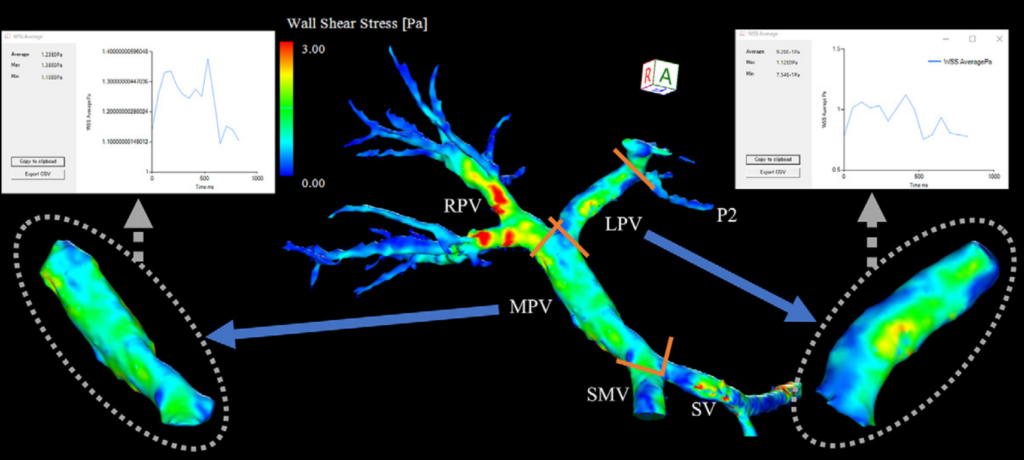Four-dimensional Flow MRI Assessment of Portal Hemodynamics and Hepatic Regeneration after Portal Vein Embolization
Dr. Ryota Hyodo, MD, PhD, along with his team at Nagoya University, employed 4D flow MRI to investigate the hemodynamic impact of portal vein embolization (PVE).
According to their findings, PVE resulted in a notable increase in left portal vein volume, wall shear stress, energy loss, mean and maximum flow velocity, as well as flow rate within just one day post-procedure.
Significantly, these metrics remained elevated for a duration of at least 3–4 days following PVE. While the portal flow increased in the future liver remnant (FLR), it concurrently decreased in the main portal vein after PVE.
The study underscores the utility of 4D flow MRI in assessing alterations in blood flow and the volume of the future liver remnant.
The 4D flow data set utilized in this research was meticulously postprocessed using "ITFlow ®" from Cardio Flow Design Inc.
Reference
Ryota Hyodo,Yasuo Takehara, Takashi Mizuno, Kazushige Ichikawa, Ryota Horiguchi, Shoji Kawakatsu, Takashi Mizuno, Tomoki Ebata, Shinji Naganawa, Ning Jin, Yoshito Ichiba, "Four-dimensional Flow MRI Assessment of Portal Hemodynamics and Hepatic Regeneration after Portal Vein Embolization", Radiology , Published Online (2023) https://doi.org/10.1148/radiol.230709.
Go To the Journal Page
